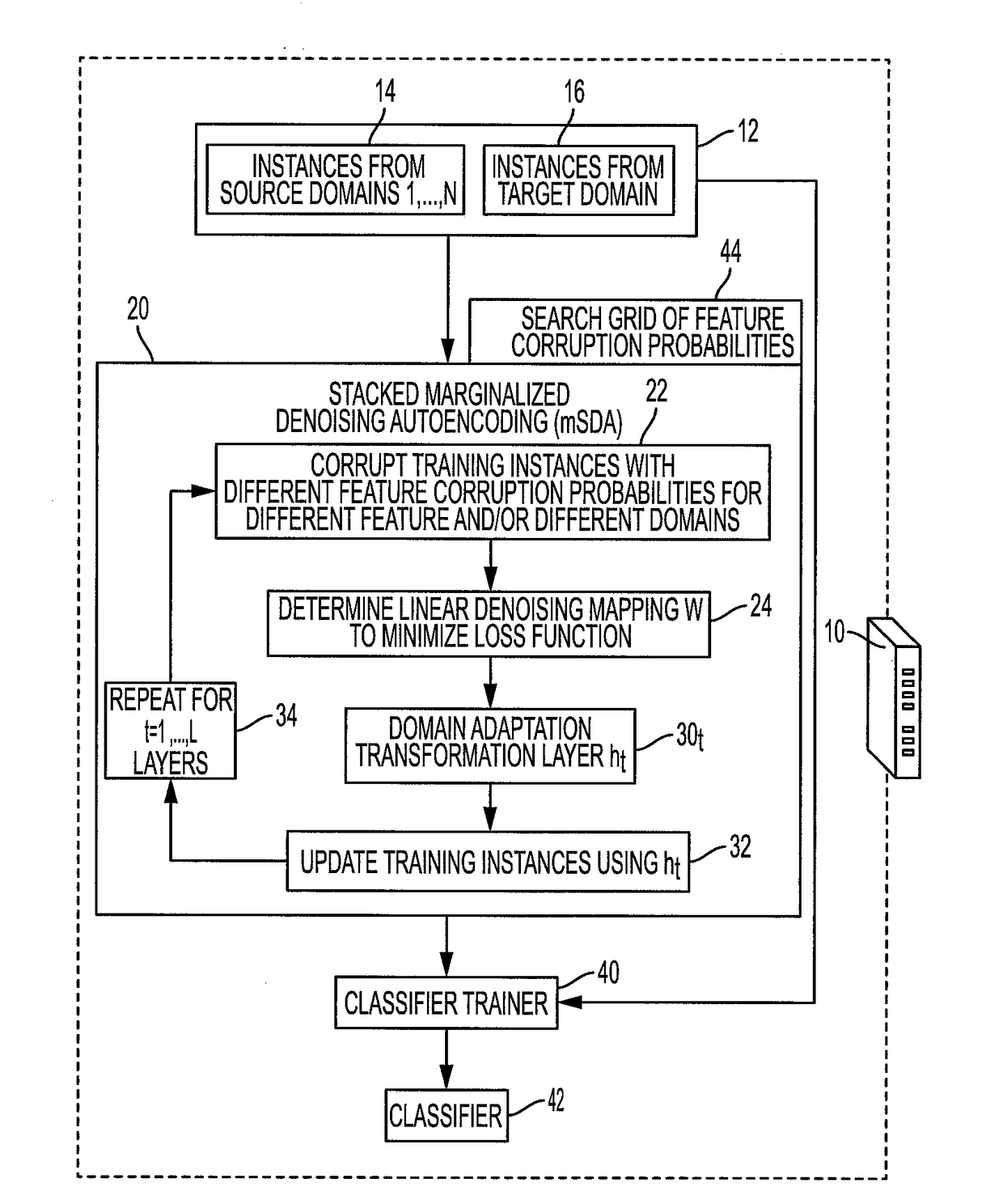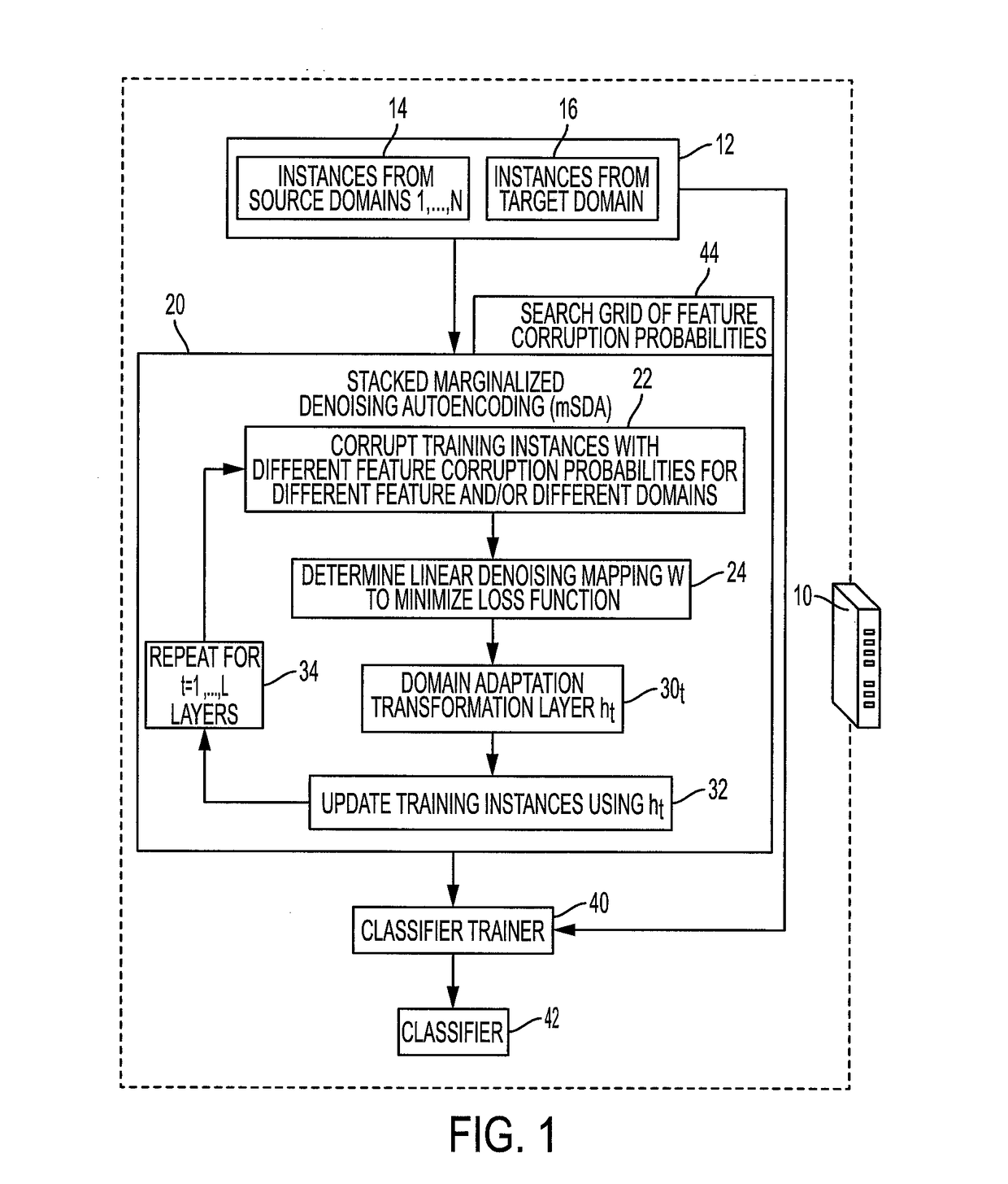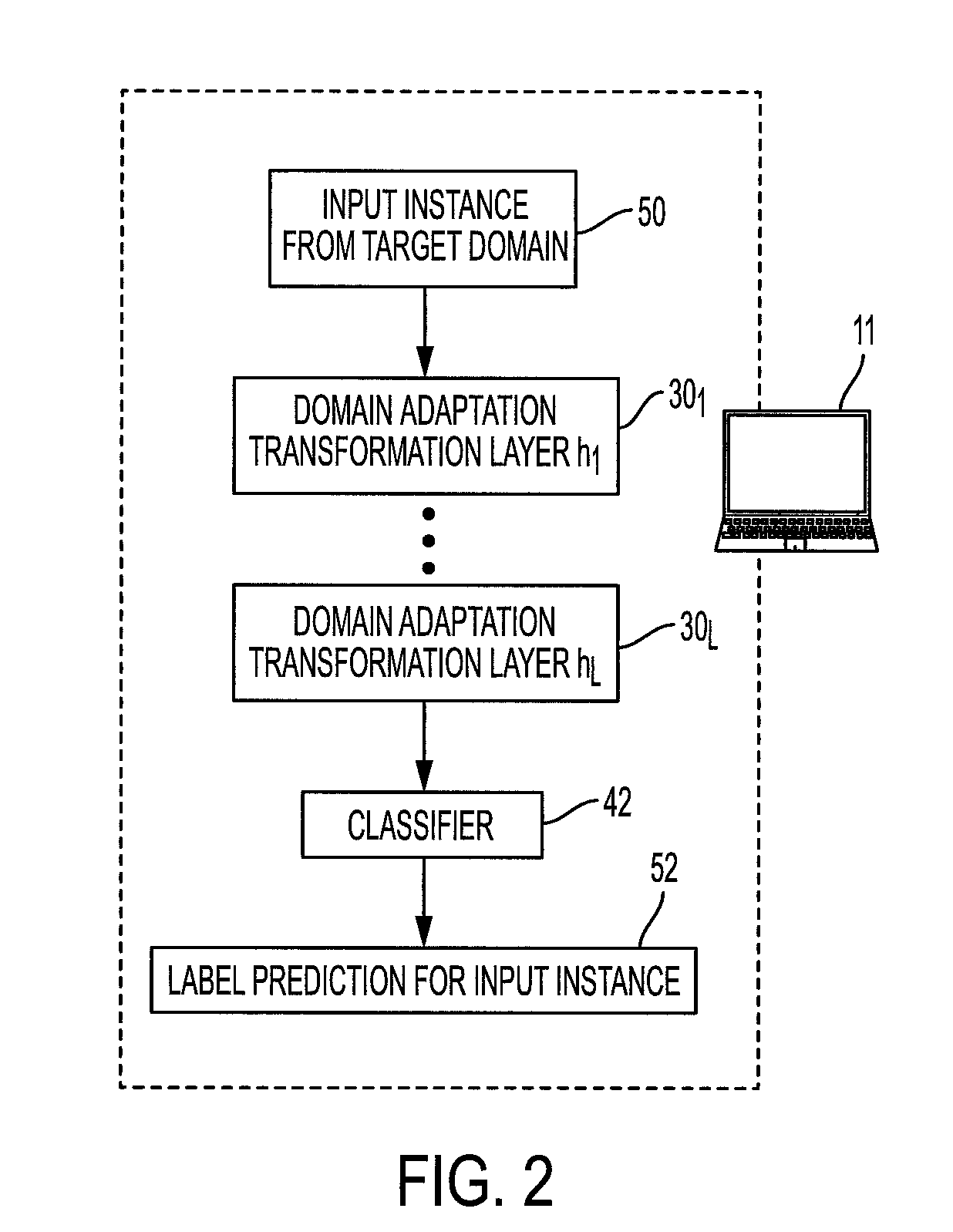Domain adaptation by multi-noising stacked marginalized denoising encoders
a denoising encoder and domain technology, applied in the field of domain adaptation by multi-noise stack marginalized denoising encoders, can solve the problems of complex source corpora, complex source domain data in training a classifier for the target domain, and material differences in source corpora
- Summary
- Abstract
- Description
- Claims
- Application Information
AI Technical Summary
Benefits of technology
Problems solved by technology
Method used
Image
Examples
Embodiment Construction
[0012]Domain adaptation using stacked marginalized denoising autoencoders (mSDAs) use a noise model represented by a feature corruption probability when corrupting feature values of the training instances. The feature corruption probability used in the mSDAs may be optimized, for example using cross-validation.
[0013]However, it is recognized herein that this approach has certain deficiencies. Conceptually, the feature corruption probability controls how much adaptation is performed. A low feature corruption probability produces weak denoising and hence can provide only limited adaptation; whereas, a large feature corruption probability requires compensatory strong denoising and hence can provide extensive adaptation. On the other hand, a high feature corruption probability can produce undesirably large adaptation in situations where minor adaptation is appropriate.
[0014]In the case of domain adaptation with multiple source domains, some source domains may be closer to the target dom...
PUM
 Login to View More
Login to View More Abstract
Description
Claims
Application Information
 Login to View More
Login to View More - R&D
- Intellectual Property
- Life Sciences
- Materials
- Tech Scout
- Unparalleled Data Quality
- Higher Quality Content
- 60% Fewer Hallucinations
Browse by: Latest US Patents, China's latest patents, Technical Efficacy Thesaurus, Application Domain, Technology Topic, Popular Technical Reports.
© 2025 PatSnap. All rights reserved.Legal|Privacy policy|Modern Slavery Act Transparency Statement|Sitemap|About US| Contact US: help@patsnap.com



